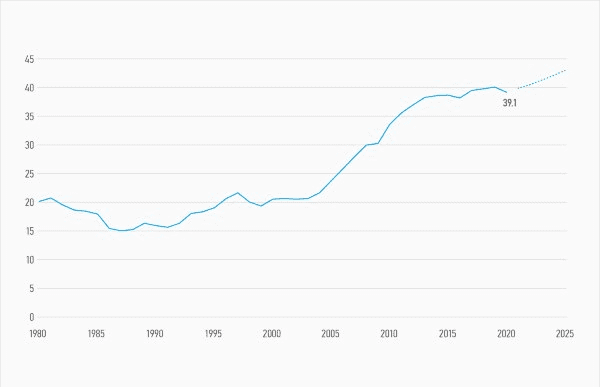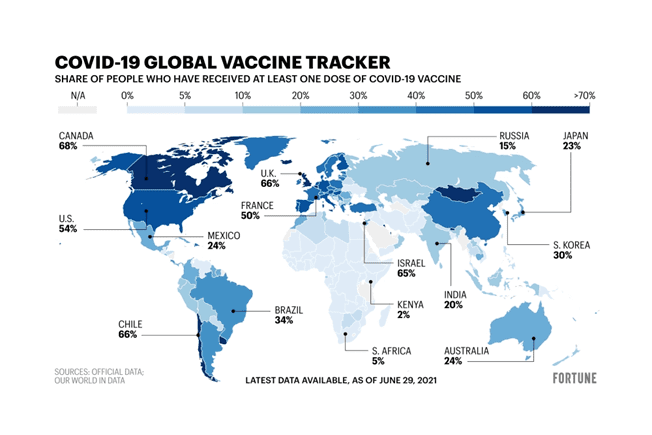Investors have historically shied away from Emerging Markets. Yet, they are the primary drivers of global growth, representing the majority of the world’s population and natural resources. While the 27 countries in the Morgan Stanley Emerging Market Index accounts for 39% of global GDP, the average investor remains underweighted – currently only 8% of all portfolios – in these lesser developed but growing economies. Those seeking a more comprehensive and international perspective plus upside returns should focus on these Emerging Markets.
A problem for investors navigating the international markets is the lack of a cohesive or all-encompassing definition of what is an Emerging Market (EM). Originally called “less developed countries” (as opposed to the United States, Japan and Western Europe) in the 1970s, the term “emerging markets” was coined by the World Bank in 1981. Unfortunately, as these economies are seen as broadly transitioning from developing to developed status in a multitude of subjective factors, there are only broad agreements among economists as to what constitutes an emerging market. However, there are currently a number of accepted characteristics of an EM:
All of these traits are dynamic and rely upon transition and growth. The problem when deciding which countries are emerging is determining the consistency and certainty of these progressions and expansions. And rarely are these multiple characteristics in sync. Therefore, investing in EMs requires both flexibility and an acceptance of greater risk.
The Emerging Markets’ share of global GDP has more than doubled from the mid-‘80s and risen sharply since the mid-2000s.

This strong percentage increase in the last 15+ years can be attributed to a number of macro changes within these economies:
These factors have combined to make EM growth more domestically consumer-driven while lessening their reliance upon global demand. This “maturation” of these developing economies has also been aided by 1) favorable government policies; 2) industrialization; 3) urbanization; 4) abundant labor supply; 4) improved balances of trade; 5) diversified supply chains; and 6) upgraded education, especially at the university level. All these have contributed to the impressive surges in economic activity and valuations of the various Emerging Markets.
While the overall outlook for Emerging Markets remains solid, the International Monetary Fund (IMF) recently lowered their forecasts for EMs due to their reduced levels of COVID-19 vaccinations in addition to the onset of the Delta variant throughout the world. These lower vaccination rates make these countries more vulnerable to continued waves of infections and economic stresses and volatility.

Unfortunately, as evidenced by the map above, the lesser developed countries are far behind the developed economies’ vaccination rates. This may pause near-term economic acceleration and create a pullback in EM valuations. Investors should utilize any potential EM declines as an opportunity to increase exposure.
An effective way to invest in Emerging Markets is through ETFs. They provide an easy-to-use, liquid and low-cost method of investing that also increases diversification. This investment strategy helps reduce single-stock risk and greatly diminishes the time and energy necessary to research the many companies within the Emerging Markets.
Investors may choose to utilize broad EM ETFs that look at all the countries, or single country ETFs. Some of the comprehensive EM ETFs are:
Investors should be aware that these are country-weighted, and China represents a large portion of these funds’ holdings.
Single-country ETFs eliminate this overrepresentation of one country and allows investors to focus on those economies with stable governments with market-friendly policies, growing industrialization and urbanization, high-technology capabilities, accessible natural resources, and a solid labor supply. Countries besides China – whose government has recently moved to constrain free market practices – that meet the criteria are:
In Summary
The average investor is currently underweighted in Emerging Markets. However, as EMs will provide the lion’s share of global economic growth for the next few decades, most investors should look to increase their exposure. Emerging Markets can be considered the small cap growth engine to the world’s established large cap titans of North America and Western Europe. And the best way to invest is through broad-based and single-country ETFs. Consistently investing in Emerging Markets over time will provide both a global balance for an investor’s portfolio and above average returns.